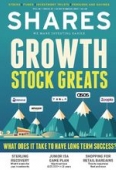Archived article
Please note that tax, investment, pension and ISA rules can change and the information and any views contained in this article may now be inaccurate.
Why do so many investment trusts raise new money at a premium to NAV?

Is it bad practice for an investment trust to raise money by issuing new shares priced at a premium to net asset value (NAV)? It’s an interesting question given that several trusts have recently asked shareholders to pay more for assets than they are worth in order to provide more money to make further investments.
The concept of issuing new shares at a premium to underlying value might seem odd if you mainly focus on individual company shares.
The majority of fundraising by listed equities is done at a discount to the market price.
Many companies on the stock market are listed purely because they want to regularly tap capital markets for new funding to support their business growth.
Investors such as pension funds and investment funds typically say they will only buy new shares as long as there’s something in it for them – namely the ability to buy cheaper than if they simply bought existing shares from another investor via the market. The world of investment trusts is slightly different as we now explain.
Why do some trusts trade at a premium?
Many trusts trade on a premium to NAV because investors are happy to pay up for certain assets currently in demand such as infrastructure – or because they feel the fund manager’s skill is so good that it deserves a premium price.
Net asset value for an investment trust is the value of its assets (for example, equities in its portfolio and cash) minus the value of its liabilities (such as debt if it uses gearing).
‘When a trust is trading at a premium, the board won’t want to issue new shares at a discount to net asset value or even at NAV as this will dilute the value of shares for existing shareholders,’ says Ryan Hughes, head of fund selection at stockbroker AJ Bell.
‘By issuing them at a premium to NAV, this extra liquidity should squeeze the premium lower pushing the price back towards “fair value”.’
BB Healthcare is a tropical example
One of the latest to raise funds, BB Healthcare Trust (BBH) is currently giving investors the chance to buy new shares at premium of 1.5% to NAV.
On one hand, investors are getting a chance to buy stock cheaper than the market – BB says its shares have traded at an average premium of 2.3% to NAV since floating on the stock market in December 2016.
However, its sector is not entirely in favour which makes us contemplate whether it should instead reward existing investors by offering them the chance to more stock as a discount in recognition of their support during tougher times.
A spokesperson for BB says the new shares are being raised at a 1.5% premium to cover associated fundraising costs.
The listing rules say a closed-end investment fund (i.e. an investment trust) may not issue further shares of the same class as existing shares for cash at a price below the net asset value of those shares. However there is an exception which is when they are first offered pro rata to existing holders of that class of shares.
Trusts can lose their premium status
Investors shouldn’t assume an investment trust will always trade at a premium. There are examples of trusts issuing new stock above NAV, only for the shares to drift to a discount over time.
Woodford Patient Capital Trust (WPCT) is a good example as it issued new shares at a 10% premium in 2015, but the stock is now trading at a 3% discount to NAV.
How market perception can boost premiums
Investment trusts often use independent parties such as accountant Mazars to determine NAV, particularly if the underlying assets aren’t companies quoted on a stock market.
Yet you have to consider the market – namely investors – determines the price at which it is happy to buy, even if it means the shares trading at a premium to the stated NAV.
GCP Infrastructure Investments (GCP) raised £70m in the summer at a 2.7% discount to the market price – but the issue price was still at a significant premium to its net asset value.
‘The premium to NAV at which the shares of GCP has always traded is simply a reflection of the fact that the market places a higher value on the cash flows arising from the underlying investments than Mazars does,’ says executive chairman Stephen Ellis.
The underlying assets play an important role
Sometimes the type of asset being targeted by a fund manager can dictate the level of premium to NAV at which new shares are issued.
For example, Standard Life Investments Property Income Trust (SLI) fund manager Jason Baggaley believes it is relatively expensive to buy a real estate asset, flagging approximately 6% in fees and stamp duty.
‘We aim to issue equity at a premium of at least 6% to avoid dilution in NAV. This is a very important discipline in our view,’ he comments.
In March, Sequoia Economic Infrastructure Income Fund (SEQI) raised £160m at 105.5p per share, which was a 4% premium to NAV but a 4.2% discount to the market price of 110.2p.
Portfolio manager Steve Cook says investors are willing to pay a premium because the fund ‘generates a stable and high dividend from loans and bonds backed by infrastructure projects’.
MedicX Fund (MXF) finance director Alan Pennell says investors have an opportunity to invest via his employer’s investment trust in government-backed properties without incurring stamp duty or other purchase costs.
If investors bought properties directly, they would have to pay these fees and would not have access to a diverse portfolio of high-quality properties. He highlights that an investment in MedicX Fund currently yields 7%.
Why do some shares trade at a discount?
A few investment trusts have issued new shares at a discount to NAV over the past year, but this is rare. For example, Oakley Capital Investments (OCi) raised £24m in January through placing existing shares (held in treasury) with institutional investors at an estimated 33% discount to NAV.
Like many private equity-style funds, Oakley has regularly traded at a discount to NAV because the market finds it hard to properly value its assets as they are predominantly likely to be privately-owned businesses and so there is less information compared to companies on the stock market.
‘It should be remembered that some trusts can trade at a discount for long periods of time, particularly when an asset class is out of favour,’ comments Hughes at AJ Bell.
Infrastructure India (IIP) is a prime example as it currently trades at a whopping 91% discount to NAV.
Investors hoping to take advantage of buying low and selling high should consider one important point. There is no guarantee that a discount rate will narrow by the time you decide to sell the shares and, therefore, no promise of boosting returns.
Important information:
These articles are provided by Shares magazine which is published by AJ Bell Media, a part of AJ Bell. Shares is not written by AJ Bell.
Shares is provided for your general information and use and is not a personal recommendation to invest. It is not intended to be relied upon by you in making or not making any investment decisions. The investments referred to in these articles will not be suitable for all investors. If in doubt please seek appropriate independent financial advice.
Investors acting on the information in these articles do so at their own risk and AJ Bell Media and its staff do not accept liability for losses suffered by investors as a result of their investment decisions.

 magazine
magazine













